

Bird Banding in Niagara The Story
[Back]
|
Bird Banding in Niagara Brought to you
by |
|
THE STORY:
Why band birds? "Individual identification of birds makes possible studies of dispersal and migration, behavior and social structure, life-span and survival rate, reproductive success and population growth."
Migration was the focus of the earliest banding studies. Migration studies continue, but today banding has much broader application. Data from banded birds are used to: study avian behavior and ecology; monitor populations; restore endangered species; assess the effects of environmental disturbances; set hunting regulations; educate people about the environment; and to address concerns about human health, safety and economy such as West Nile disease, bird hazards at airports and crop depredations. Results from banding studies support national and international conservation programs such as the North American Waterfowl Management Plan, and Partners in Flight.
How is Banding Done? Following is a pictorial guide. Check it out! Bird banding is one of the most useful tools in the study of wild birds. Wild birds are captured in most instances using "mist nets as pictured below. Mist nets are set in "net lanes" They are made of 70 denier black nylon, about 40 feet long and between 8 & 9 ft. high and with mesh about 1 1/8 inch. [30mm] When a bird flies into a net it becomes entangled, unharmed, and unable to escape. The bander patrols the net lane frequently to collect, study and band the captives before safely releasing them. Another method is by use of a "cannon net". The prey needs to be baited where the net has been set up and then "fired" over the top of the feeding birds.
The birds shown below only signifies a fraction of the birds banded in one outing. You MUST possess a Federal banding permit licensed to band any bird. Some states require state licenses in addition to a Federal license. Persons who want to apply for a banding permit must be able to show that they are qualified to safely trap, handle, and band the birds. Courses in banding and handling birds is available.
| All photos were taken at the 3 F
Club Banding Station in Lewiston NY, Niagara County
All photos by Joan Hilts |
||
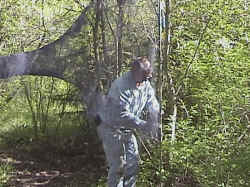 |
 |
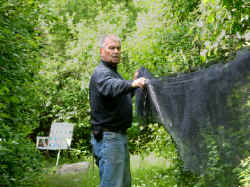 |
| Opening the nets This net is what is called a "mist" net |
Retrieving the bird Birds fly into the mesh and harmlessly retrieved for study |
Dismantling the net for another day |
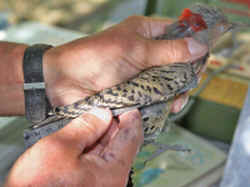 |
 |
|
| Banding There are 23 standard sized bands and 5 specially sized bands |
Wing Measurement This is the most accepted way of wing measurement, with the primaries flattened against a ruler |
Recording the Data A bander records information about the bird as well as where & when |
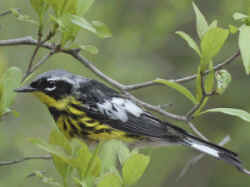 |
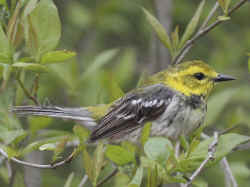 |
|
| The Banding Station First records of banding in North America was done by James Audubon in 1803 |
Magnolia Warbler At 4.25 inches, is known as a small, active, insect-eating bird |
Black Throated Green Warbler A small songbird same size as the Magnolia Warbler on the left |
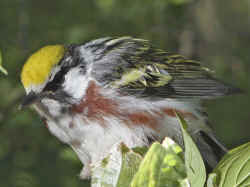 |
||
| Chestnut Sided Warbler Another song bird with song accented at the end like "the pleased-to-MEETCHA song" |
Oven Bird Another little guy with a song that says loudly, "teacher, teacher, teacher," |
Swainson's Thrush 6-7" in size. Song is a "whit" also a hollow "peep" similar to a single note from a spring peeper frog. |
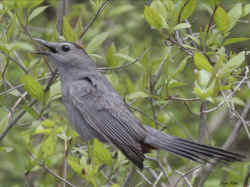 |
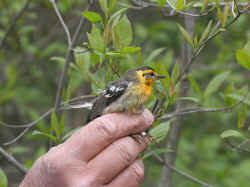 |
Birds and other wildlife
need three essential components to survive. These essentials are food,
water and cover. You can easily provide a backyard wilderness of
your own. Of course naturalized settings are best, trees, shrubs, vines,
lawns, water, etc. An estimated 60 million people feed birds at backyard
feeders The release site is noted in the bander's records |
| Gray Catbird 8-9" size song bird. Song is "mew" and only vaguely sounds cat-like. Hence the name "Catbird" No, cowbirds don't "moo"..Ha! |
Releasing a newly banded female Blackburnian
Warbler |
"Ornithology" is the scientific study of Birds |
Birds of Prey is another interesting Creature of God that Farrell is licensed to capture for studying. We will add Birds of Prey to these pages sometime in the future with actual photos of captures in the Niagara area done by Birder/Bander, Jerry Farrell.
Back to Outdoors Niagara main index / Back to 3 F Club Page / Back to first Bird Banding Page